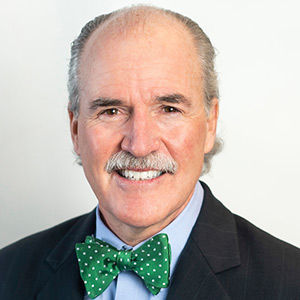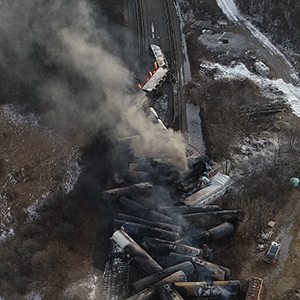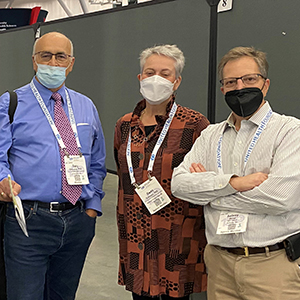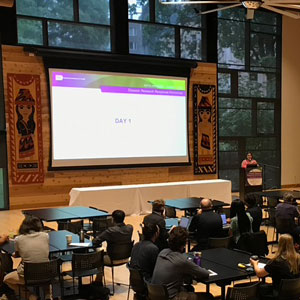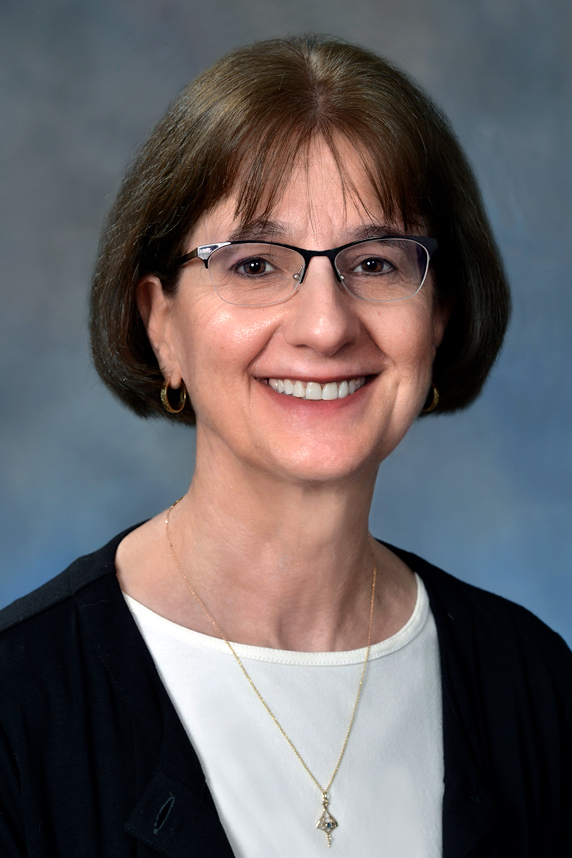 Symanski also directs the Maternal and Infant Environmental Health Riskscape Research Center and is deputy director of the Gulf Coast Center for Precision Environmental Health. (Photo courtesy of Elaine Symanski)
Symanski also directs the Maternal and Infant Environmental Health Riskscape Research Center and is deputy director of the Gulf Coast Center for Precision Environmental Health. (Photo courtesy of Elaine Symanski)In 2017, Hurricane Harvey affected more than 30,000 Texas residents and destroyed more than 200,000 homes. Following that experience, the Southwest Center for Occupational and Environmental Health (SWCOEH) teamed up with community, academic, and government partners to create a location-specific disaster research response (DR2) toolkit.
These experiences are described in a paper published March 16 by NIEHS-funded researcher Elaine Symanski, Ph.D., and her collaborators. The former director of SWCOEH, which is at The University of Texas Health Science Center (UTHSC) at Houston, Symanski is now with Baylor College of Medicine.
The new paper highlights DR2 work assessing allergic symptoms and stress, as well as safety training and distribution of personal protection kits, in the aftermath of Hurricane Harvey.
Just 18 months after the hurricane, SWCOEH used the study protocols and other resources in the new toolkit to rapidly mobilize researchers and volunteers to respond to the Intercontinental Terminals Company fire in Deer Park, Texas. The fire started March 17, 2019 and burned for six days.
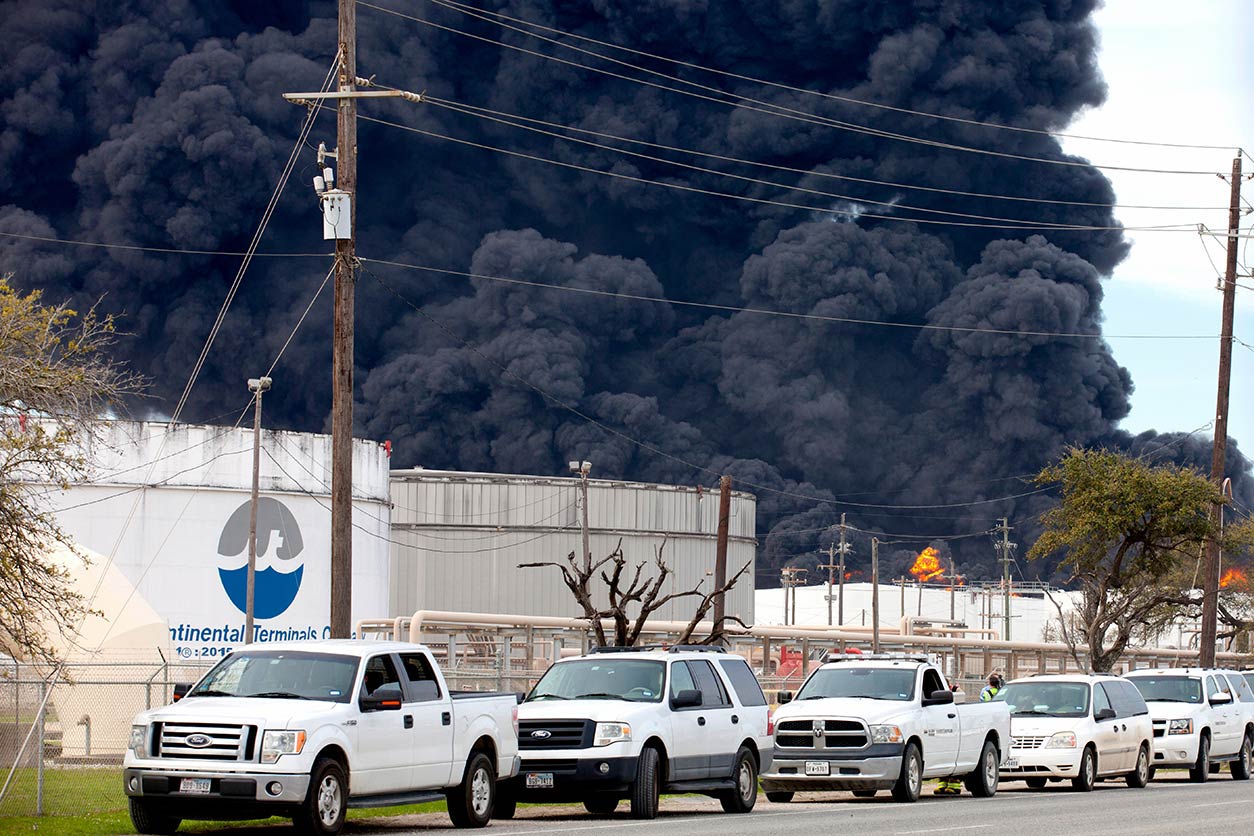 Authors of the March 16 paper said teams of researchers rapidly trained and deployed student volunteers to monitor black carbon, particulate matter, and volatile organic compounds while the fire yet burned. (Photo courtesy of Aneese / Shutterstock.com)
Authors of the March 16 paper said teams of researchers rapidly trained and deployed student volunteers to monitor black carbon, particulate matter, and volatile organic compounds while the fire yet burned. (Photo courtesy of Aneese / Shutterstock.com)“Our experience illustrates the potential positive impact of a coordinated and collaborative response to the environmental consequences of disasters, and how one experience informs capacity among all partners in future DR2 responses,” Symanski said.
The National Institutes of Health (NIH) DR2 program, led by NIEHS, contributed to development of the Houston-area DR2 toolkit through publicly available resources such as the Rapid Acquisition of Pre- and Post-Incident Disaster Data (RAPIDD) protocol. Use of the RAPIDD protocol has helped researchers shorten the time needed to begin collecting health data, medical tests, and biological samples from people exposed to environmental contaminants.
 Inkyu Han, Ph.D., center, from UTHSC, and the field team inspected instruments for air pollution exposure assessment before deployment in Deer Park, Texas. (Photo courtesy of Elaine Symanski)
Inkyu Han, Ph.D., center, from UTHSC, and the field team inspected instruments for air pollution exposure assessment before deployment in Deer Park, Texas. (Photo courtesy of Elaine Symanski)Bringing science to the scene
 Kwok also serves as a senior advisor in the NIEHS Office of the Director. (Photo courtesy of Steve McCaw / NIEHS)
Kwok also serves as a senior advisor in the NIEHS Office of the Director. (Photo courtesy of Steve McCaw / NIEHS)Richard Kwok, Ph.D., a staff scientist in the NIEHS Epidemiology Branch, serves as the institute’s DR2 program manager. He explained that although the middle of a disaster may seem an inappropriate time to conduct research, there are good reasons why that timing is incredibly important, and development of DR2 toolkits is essential.
“In the midst of a typical disaster response, the primary focus is on immediate needs — saving lives and preventing property and environmental damage,” Kwok said.
“Because of this, health concerns repeatedly go unidentified and unaddressed. The DR2 program is helping enable research that otherwise would be missed,” he continued. “We can’t improve our responses, or our ability to recover and better prepare for future events without the critical information provided by timely data collection and research.”
Environmental justice matters
Symanski noted that communities of color are more likely to experience greater impacts of disasters, due to vulnerabilities like poor housing and limited access to a host of resources. Therefore, DR2 toolkits need to address environmental justice.
“Addressing environmental justice concerns requires a trusted partnership between academics and community members,” she said. “There is a need for greater recognition and allocation of resources among [research] funders to support long-term activities required for establishing these partnerships.”
 Doctoral student Tsai-Shu Chu deployed a real-time, low-cost air sensor and a passive sampler for measuring air pollutants outside a participant’s home in Deer Park, Texas. (Photo courtesy of Elaine Symanski)
Doctoral student Tsai-Shu Chu deployed a real-time, low-cost air sensor and a passive sampler for measuring air pollutants outside a participant’s home in Deer Park, Texas. (Photo courtesy of Elaine Symanski)She further explained that lots of communities may be disproportionately affected by disasters, so researchers need an expanded network of partnerships to conduct community-engaged research.
“This circles back to the need for resources to establish and maintain partnerships that can be leveraged when disasters hit,” Symanski said.
From local to global impact
The NIH DR2 program resources are seeing usage beyond local applications (see sidebar). “In April 2020, NIEHS, in collaboration with the National Library of Medicine, mobilized staff and contractors to quickly transform the DR2 platform to support the National Institutes of Health (NIH) COVID-19 response,” said Aubrey Miller, M.D., NIEHS senior medical advisor and NIH DR2 program director. “To date, over 125 COVID-19 data collection tools have been submitted to the DR2 platform by research groups around the world.”
Miller said that the DR2 team will launch a new web portal this summer, with improvements and updates, including keyword search capabilities, availability of common data elements, surveys to enhance electronic data capture, and links to other widely used data repositories.
Citations:
An Han H, Han I, McCurdy S, Whitworth KW, Delclos GI, Rammah A, Symanski E. 2020. The Intercontinental Terminals Chemical Fire Study: a rapid response to an industrial disaster to address resident concerns in Deer Park, Texas. 2020. Int J Environ Res Public Health 17(3):986.
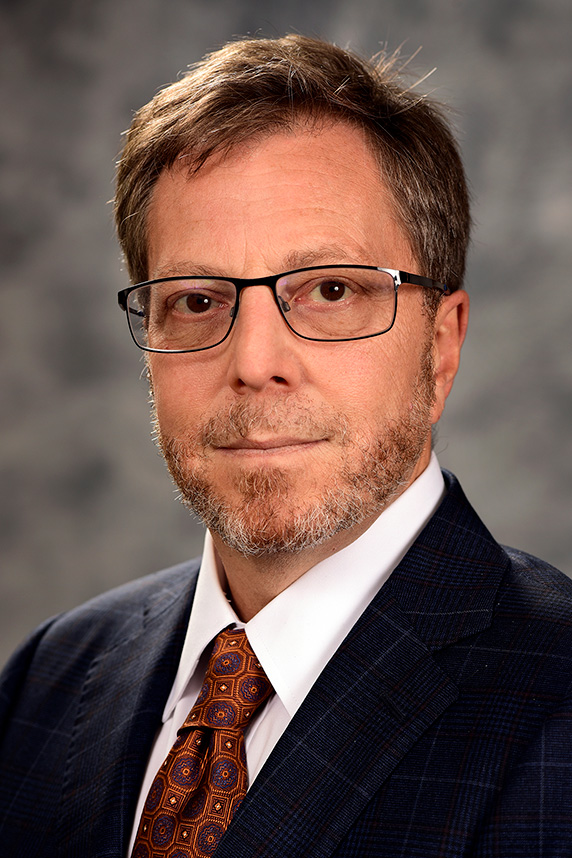 Miller, who helped initiate DR2 in 2012, serves as the NIEHS lead of the program. (Photo courtesy of Steve McCaw / NIEHS)
Miller, who helped initiate DR2 in 2012, serves as the NIEHS lead of the program. (Photo courtesy of Steve McCaw / NIEHS)Li Y, Bakos-Block C, Rammah A, Magal R, Adekanye J, Esquenazi S, McDaniel MR, Zhang K, Symanski E, Perkison WB. 2020. The Post Hurricane Harvey Respiratory Protection Training Program. J Occup Environ Med 62(10):842–846.
Oluyomi AO, Panthagani K, Sotelo J, Gu X, Armstrong G, Luo DN, Hoffman KL, Rohlman D, Tidwell L, Hamilton WJ, Symanski E, Anderson K, Petrosino JF, Walker CL, Bondy M. 2021. Houston Hurricane Harvey health (Houston-3H) study: assessment of allergic symptoms and stress after Hurricane Harvey flooding. Environ Health 20(1):9.
Symanski E, An Han H, Han I, McDaniel M, Whitworth KW, McCurdy S, Perkison WB, Rammah A, Lewis PGT, Delclos GL, Craft E, Bondy M, Walker CL, Hopkins H, Cedeno Laurent JD, James D. 2021. Responding to natural and industrial disasters: partnerships and lessons learned. Disaster Med Public Health Prep 16:1-4.
(Kelley Christensen is a contract writer and editor for the NIEHS Office of Communications and Public Liaison.)





